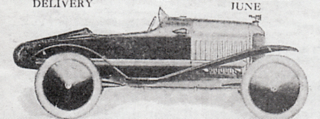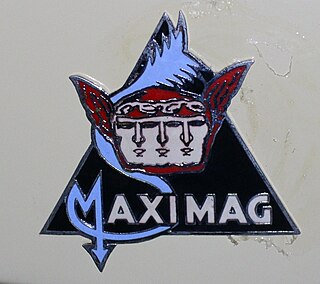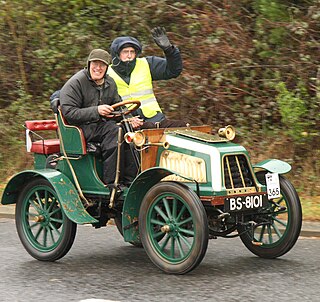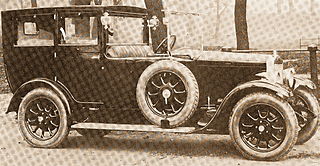
The Aero Car was a flat twin-engine cyclecar manufactured from 1919 to 1920 by the Aero Car Engineering Company in Clapton, London, United Kingdom.

The De Boisse, was a French automobile manufactured from 1901 until 1904 by Jacques de Boisse in Paris.
Zeiller & Fournier was a short-lived French automobile producer.

Maximag was the name of a Swiss automobile, produced by Motosacoche, based at Carouge, a suburb of Geneva, from 1923 till 1928.

Pearson & Cox was a British automobile manufacturer from Shortlands, then in Kent. They traded from 1908 to 1916, and in 1913.), they were producing both steam-powered vehicles and petrol-powered cyclecars.
Cumbria Motors was a British cyclecar manufacturer based in Cockermouth (Cumberland) in 1914.
Dayton, Dayton Dandy, was a British automobile manufactured in 1922 by the Charles Day Manufacturing Co. Ltd. in the London Borough of Hackney W10. The Dandy was a Cyclecar with a single cylinder Blackburne engine producing 4 hp.
YEC was a British motor car. Approximately 50 cars were manufactured in Sheffield from 1907–08.
WSC, Wholesale Supply Co. Ltd. was a Scottish automobile manufacturer, established in 1914 in Aberdeen. The cyclecar was marketed under the name of WSC with a V twin J.A.P. engine rated for taxation at 8 hp.
Gordon, Gordon Cycle & Motor Company Ltd was a British manufacturer of bicycles and motor cars in 1903 and 1904. It was established on the Seven Sisters Road, north London.
Newey, Newey-Aster, Gordon Newey, Gordon Newey Ltd, G.N.L. (GNL), (1907-1920) was a British automobile manufacturer from Birmingham.

Malicet & Blin (M.A.B.) was a French manufacturer of bicycles, automobiles, auto components, and aeronautical engines from 1890 until 1925. It expanded into the motor industry in 1897 and aero engines in 1914. They produced both incomplete and entire cars for the UK market, which were badged as Marlborough.

Lafitte was a French automobile manufactured in Paris from 1923–1928. The 'SA de Construction de Voiturettes Th. Lafitte', owned by Theodore Laffitte, manufactured a light cyclecar which was renowned for its innovative engineering. It incorporated a three-cylinder radial engine mounted in a hinged cage, which was tilted by the driver to engage and vary the ratio of the friction drive to the rear wheels. Uniquely, the 'variable ratio' friction drive consisted of a convex steel flywheel and a concave 'clutch plate' that was faced by wound strips of paper or sometimes leather.

Lacoste & Battmann, Lacoste et Battmann, was a French manufacturer of automobiles, based in Paris, from 1897 until 1913.
Mutel, Mutel & Cie was a French manufacturer of automobiles and engines, based in Paris, from 1902 until 1906.
C.V.R., Automobiles C.V.R. was a manufacturer of automobiles in Paris, France, from 1906 until 1907. It was founded when Automobiles Couverchel moved the business from Neuilly-sur-Seine to Boulogne-Billancourt.

Automobiles Tony Huber, Tony Huber was a French manufacturer of automobiles in Paris from 1902 until 1906.

Windsor was a British automobile brand, designed and manufactured by James Bartle & Co. Ltd, in Notting Hill (London) between 1924–1927.
Larmar Engineering Company Limited is a British engineering company and former manufacturer of automobiles.

Hanzer Frères, Hanzer, was a French manufacturer of automobiles. The Petit-Ivry company of Ivry-sur-Seine began building automobiles in 1899. Production ended in 1903.












